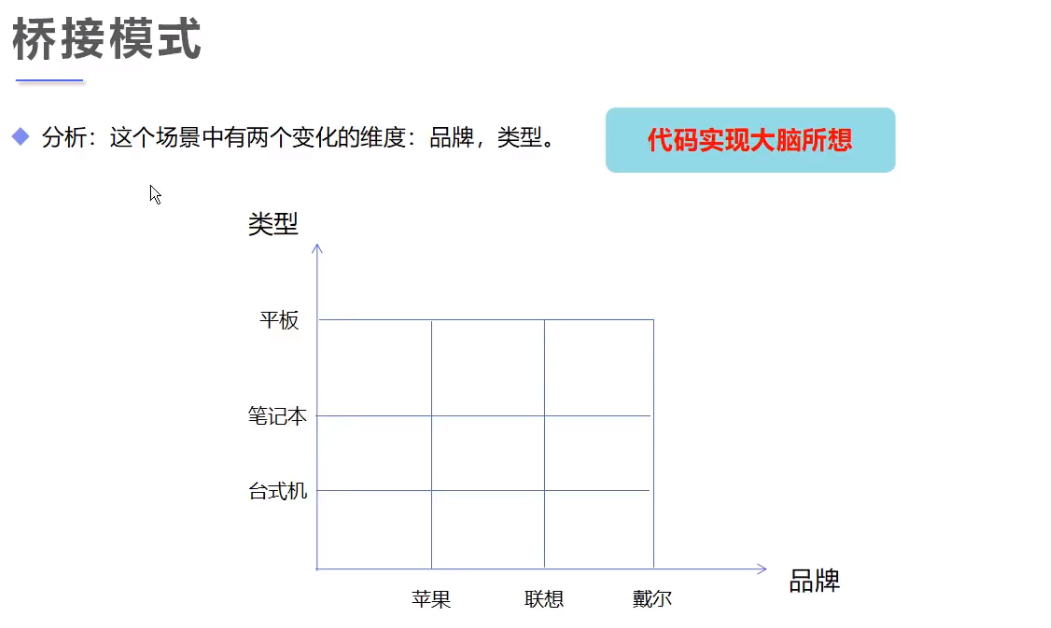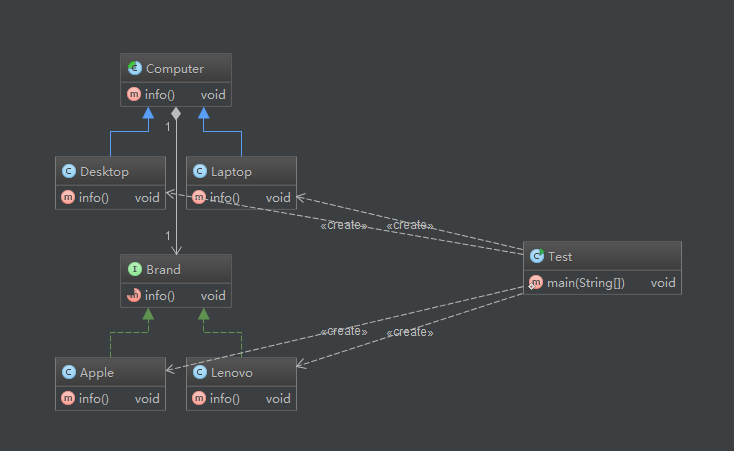简介
桥接模式, 类似于棋盘组合. 使用java中的组合方式实现逻辑.
code
public class Test {
public static void main(String[] args) {
// 苹果笔记本
// 联想台式机
Computer computer = new Laptop(new Apple());
computer.info();
Computer computer1 = new Desktop(new Lenovo());
computer1.info();
}
}
public class Lenovo implements Brand {
@Override
public void info() {
System.out.println("联想");
}
}
public class Apple implements Brand {
@Override
public void info() {
System.out.println("苹果电脑");
}
}
public interface Brand {
void info();
}
public abstract class Computer {
protected Brand brand;
public Computer(Brand brand) {
this.brand = brand;
}
public void info() {
brand.info();
}
}
class Desktop extends Computer{
public Desktop(Brand brand){
super(brand);
}
@Override
public void info() {
super.info();
System.out.println("台式机");
}
}
class Laptop extends Computer{
public Laptop(Brand brand) {
super(brand);
}
@Override
public void info() {
super.info();
System.out.println("笔记本");
}
}
IMAGE

UML

可以看到 Brand 通过组合的方式融合进了 Computer.
好处
桥接模式偶尔类似于多继承方案, 但是多继承方案违背了类的单一职责原则, 复用性比较差,
类的个数也非常多, 桥接模式是比多继承方案更好的解决方法. 极大的减少了子类的个数, 从而降低管理和维护的成本.
桥接模式提高了系统的可扩展性, 在两个变化维度中任意扩展一个维度, 都不需要修改原有系统. 符合开闭原则, 就像一座桥, 可以把两个变化的维度连接起来!
缺点
桥接模式要求正确识别出系统中两个独立变化的维度, 因此其使用范围具有一定的局限性.